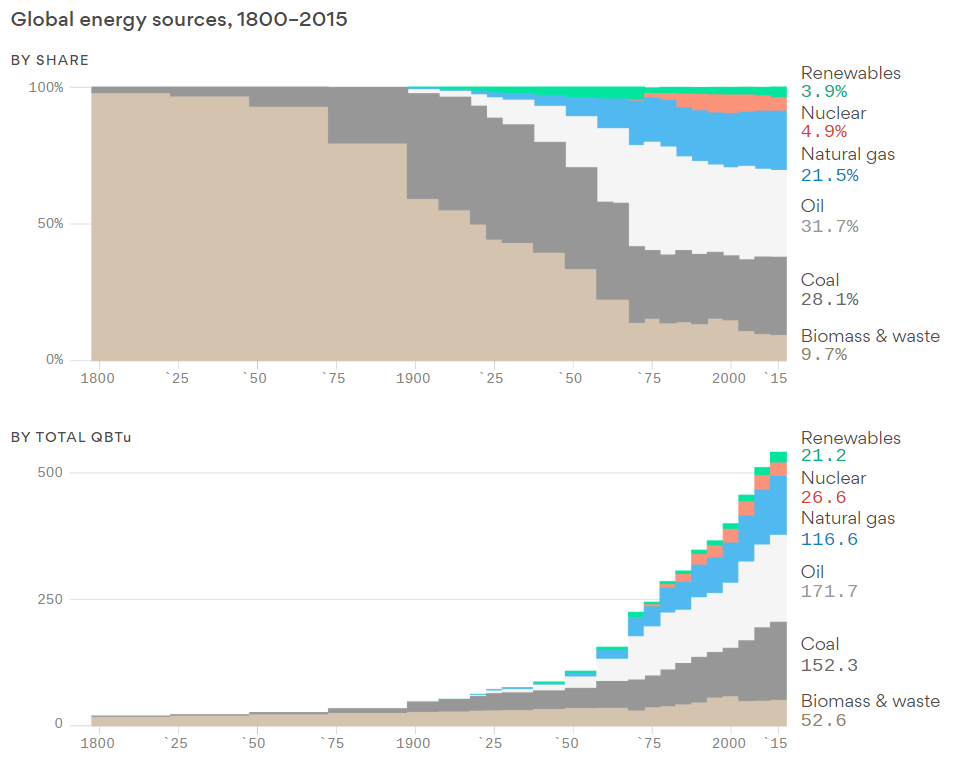Despite Renewables Growth, There Has Never Been an Energy Transition

By Richard Newell and Daniel Raimi
September 17, 2018 - Since 2010, the costs of producing electricity from solar photovoltaic systems have decreased by more than 80%. Wind and solar now vie with natural gas to provide new electricity generating capacity. To some, these trends signal the world’s latest energy transition: away from fossil fuels and toward a renewable future.
The big picture: These historical changes in the energy system, however, have been a matter of addition, not transition. Although the percentage shares of biomass, coal and oil in our energy supply have fallen with the rise of alternatives, their total use continues to grow. The world has never experienced an energy transition, but the challenge of climate change means that, for the first time, one will need to begin.

Note: 1800–1900 data shown at 25-year intervals, 1900–1920 & 1930–1970 data shown at 10-year intervals, and 1920–1930 & 1970–2015 data shown at 5-year intervals. Data: Arnulf Grubler (2008), International Energy Agency (2017).
Reproduced from charts by Richard Newell and Daniel Raimi. Chart: Axios Visuals
Since 1800 biomass consumption has increased by about 275%, and coal use by more than 60% just since 2000. Rapidly falling costs and growing investments have helped boost wind and solar power, but these energy sources — like nuclear, oil, and gas before them — are building on top of old ones, rather than replacing them.
A true energy transition will need to reduce carbon emissions. By 2040, the International Energy Agency projects that, to reach the climate targets laid out in the Paris Agreement, global coal consumption would need to decline by more than half while oil consumption falls by almost 25%. Natural gas could continue to grow, though more slowly than today. Renewables would need to increase roughly tenfold from today’s levels to provide, together with nuclear, more than 25% of global energy.
Economists have consistently identified the policies to achieve such a transition: a price on greenhouse gas emissions, coupled with incentives for early-stage research and new technology development, including advanced solar, nuclear and carbon capture technologies.
Yes, but: While some major emitters are adopting these policies, they are mostly falling short of the goals outlined in Paris, and new investments in fossil fuels continue to more than double those in renewables. Meanwhile, federal policy in the U.S. is moving in the opposite direction. And even with ideal policies, a real energy transition would mean winners and losers, creating substantial challenges for regions reliant on the production, transformation and consumption of fossil fuels.
The bottom line: To avoid the worst impacts of climate change, renewables and new technologies will need to do more than build atop CO2–intensive fossil fuels — they will need to push out incumbents while at the same time expanding global energy access and reducing the system’s environmental footprint.
Richard Newell is president and CEO of Resources for the Future. Daniel Raimi is a senior research associate in RFF’s Energy and Climate Program.

